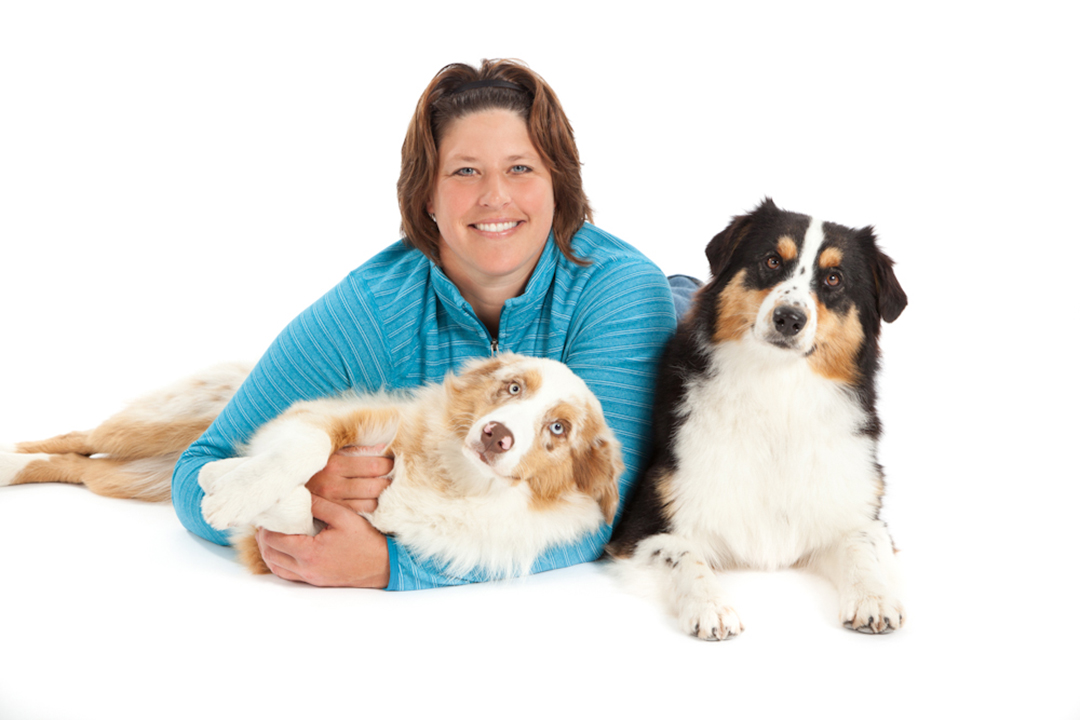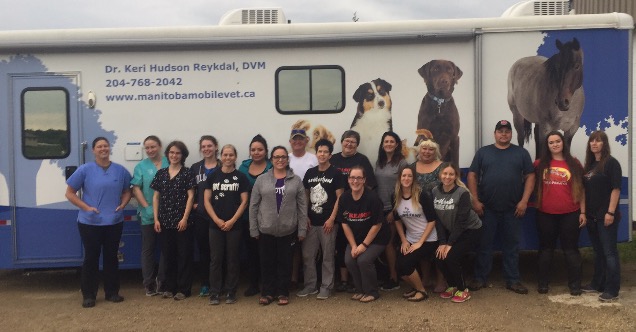
Healer of the Prairies
It’s not uncommon for veterinarians to have visits from students, young and old, looking to soak up some of their carefully-accrued experience through on-site, experiential learning.
By HenryTye GlazebrookMuch less common are visits from camera crews, outfitting their veterinary practice with microphones, lights and other dressings to best capture the day-in and day-out work that goes into healing animals — big and small.
But for Dr. Keri Hudson-Reykdal, the two aren’t as dissimilar as you might expect.
“Throughout the years, we’ve had lots of students come and watch us,” says the star of Dr. Keri: Prairie Vet, a new television show airing on Animal Planet. “I guess with the crew I just thought of the cameraperson as being a vet student, and then approached these situations in the same way I would showing a vet student how to do different things. I think that’s made it easier to do.”
A 2000 graduate from the University of Saskatchewan’s Western College of Veterinary Medicine (WCVM), Hudson-Reykdal practises in the small community of Ashern, Man., that’s located about 180 kilometres northwest of Winnipeg. Dr. Keri: Prairie Vet, which is filmed in a documentary-style format, follows her through her daily life as a practicing veterinarian in rural Manitoba.
The show began as a nut of an idea five years ago when one of Hudson-Reykdal’s Facebook friends approached her about starting the project. The person was inspired by Hudson-Reykdal’s proficient use of the social media platform as a means of educating and informing others about the ins and outs of veterinary procedures.
Describing herself as more of an introvert, Hudson-Reykdal nonetheless warmed quickly to being followed around by a team of cameras — in part, she says, on account of already being familiar with the concerned gazes of her patients’ owners.
“Obviously in surgeries they’re not with us, but a lot of the work we do are things where people like to be with their pet throughout [the experience],” she says. “People like to see their pet being examined and the procedures, if they’re minor, that you’re doing on them. We don’t typically do a lot of stuff behind closed doors.”
The goal of Dr. Keri: Prairie Vet, says Hudson-Reykdal, is to provide an entertaining and informative source of knowledge on all of the intricacies that go into caring and providing for small and large animals.
“We go through routine stuff and more complex procedures, trying to explain things to people in layman's terms so they can understand it, but also, so they can learn a little bit more about their pets,” she says.
“A lot of people just don’t understand. They get a pet, but they don’t really do the research behind it. They don’t really know all the important things they need to consider.”
Hudson-Reykdal’s practice is buoyed by her use of a mobile veterinary hospital, a vehicle outfitted with all the bells and whistles of a stationary clinic. The apparatus, which is most often used for spay and neuter clinics in First Nations communities and other remote areas where residents don’t have access to a veterinarian, can take on just about any patient it can fit through its doors.
“We’ve had a calf or two into the clinic when we need to get a fractured leg X-rayed, but otherwise, it’s just small animals,” Hudson-Reykdal says.
Dr. Keri: Prairie Vet premiered in December 2017, and the show has already received a good deal of praise from young fans who have been inspired by its star’s work with animals. Hudson-Reykdal hopes the show will give these kids a greater understanding of everything that the veterinary profession has to offer.
“Everyone seems to want to be a vet growing up, so the show gives them an idea of what it’s actually like,” she says. “I think that’s good, because then they’re not going in blind.”
So far, her favourite fan interaction came while she was on set, of all places. A young boy who brought his own dog in for care ended up discovering a new passion for the welfare of animals.
“He was always at the clinic and he was always smiling, but when they went to interview him after[wards], he said how worried he was about his dog and how thankful he is that we were there to help,” she says.
“This boy’s about 10 or 11 years old, and he talked about how inspired he was by coming to see us at the clinic and by spending lots of time there, and how now he wants to be a veterinarian.”
These types of encounters have given Hudson-Reykdal hope that Dr. Keri: Prairie Vet could be a beacon of knowledge of sorts, not just for small children looking for inspiration in their life but also to anyone who doesn’t realize just how vital veterinarians are to rural communities.
“Small town people still need access to veterinary care just like they do in the city, and that’s not always available to everyone, everywhere,” she says. “I hope we’re reminding people of the importance of practitioners remaining in those small towns and how appreciative people in those areas are of having veterinary care.”
HenryTye Glazebrook is a freelance writer based in Vancouver, B.C.

